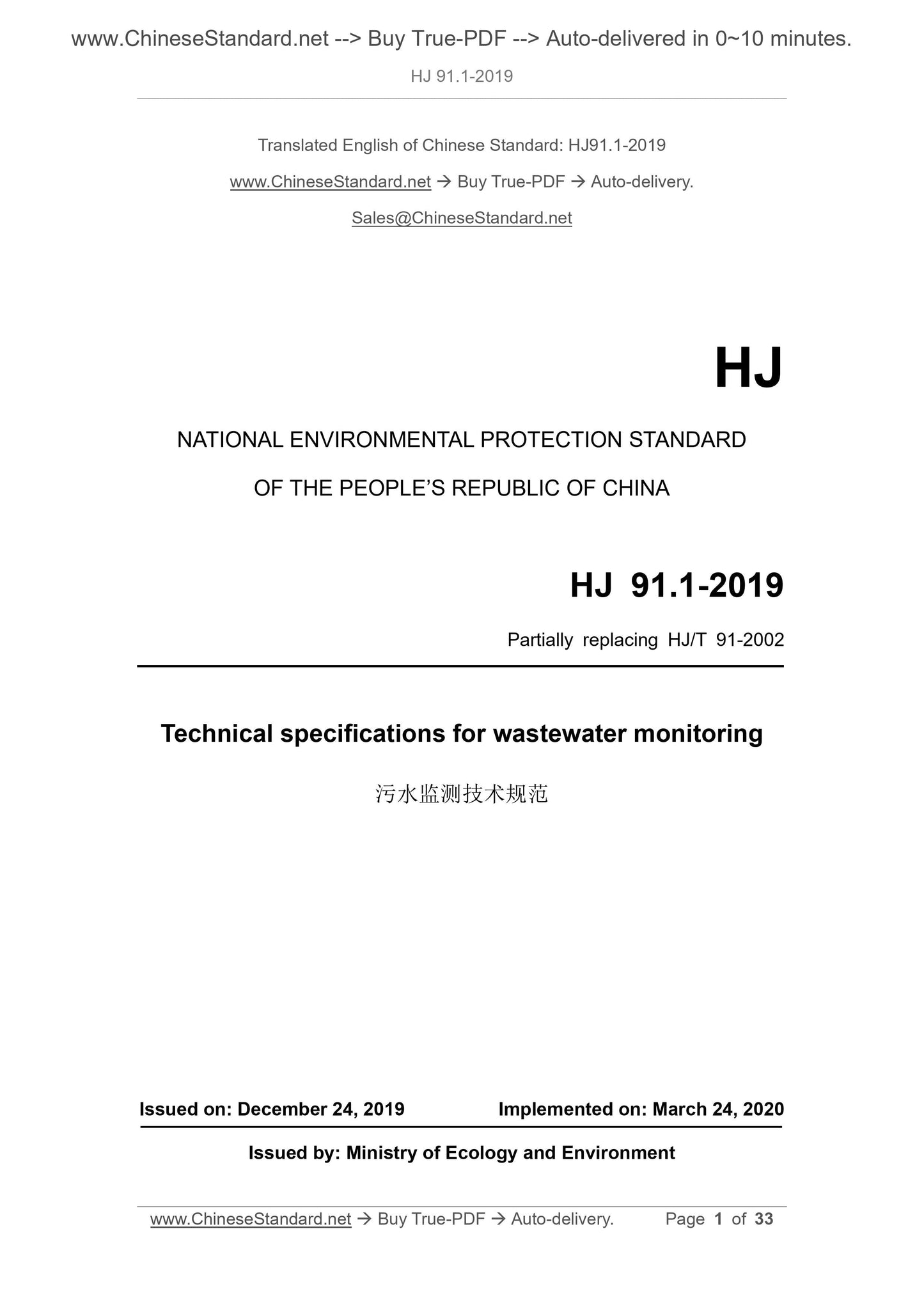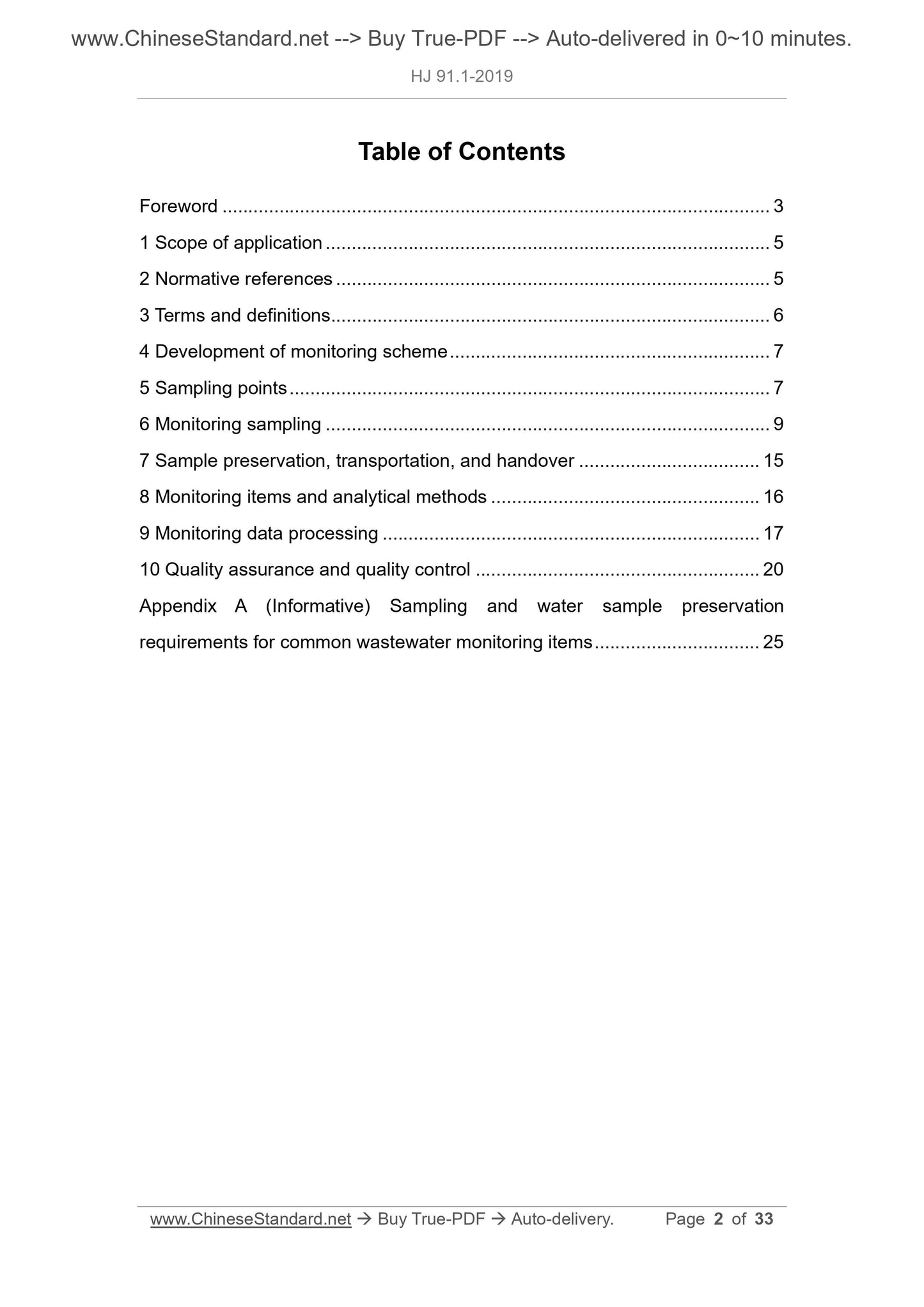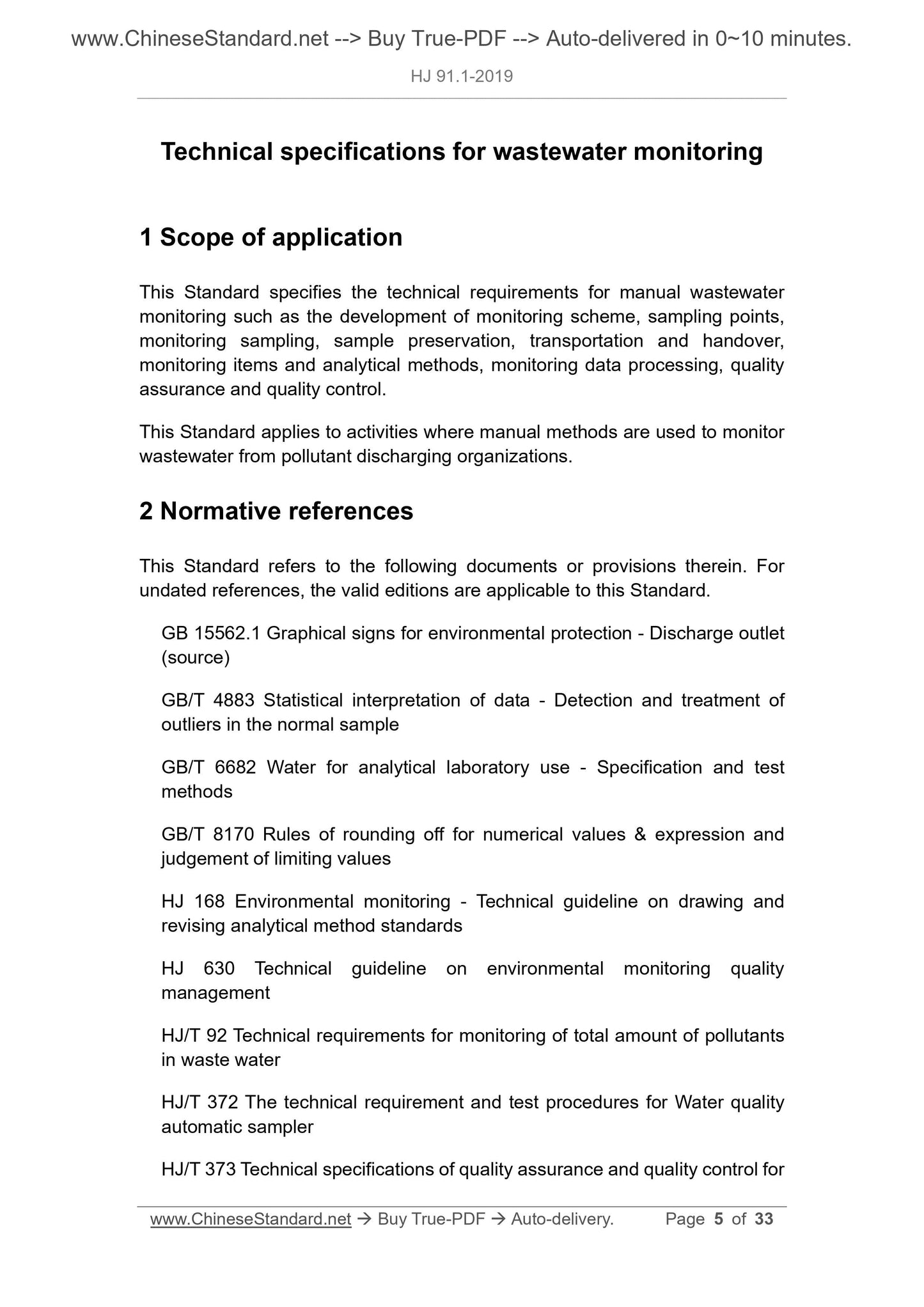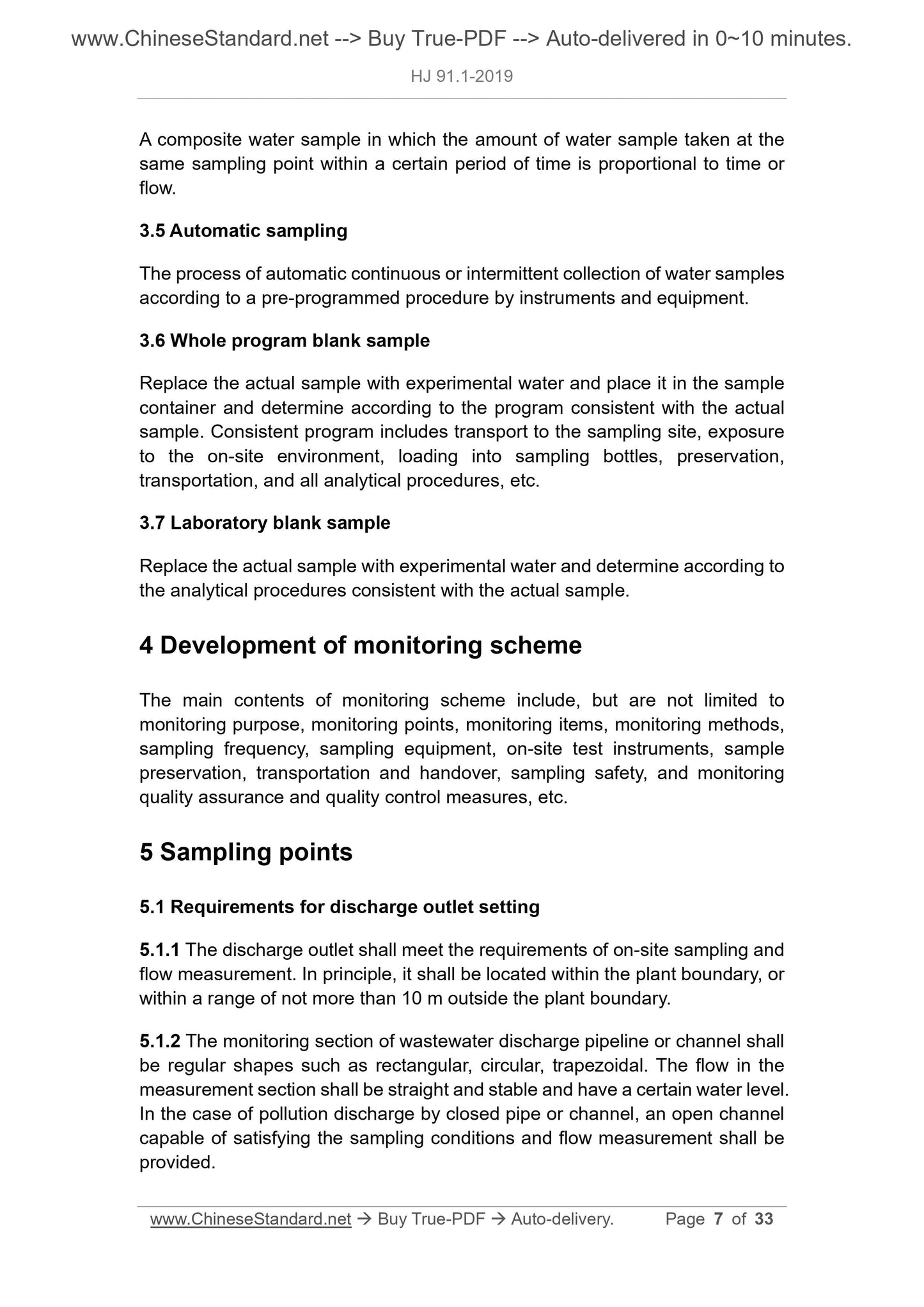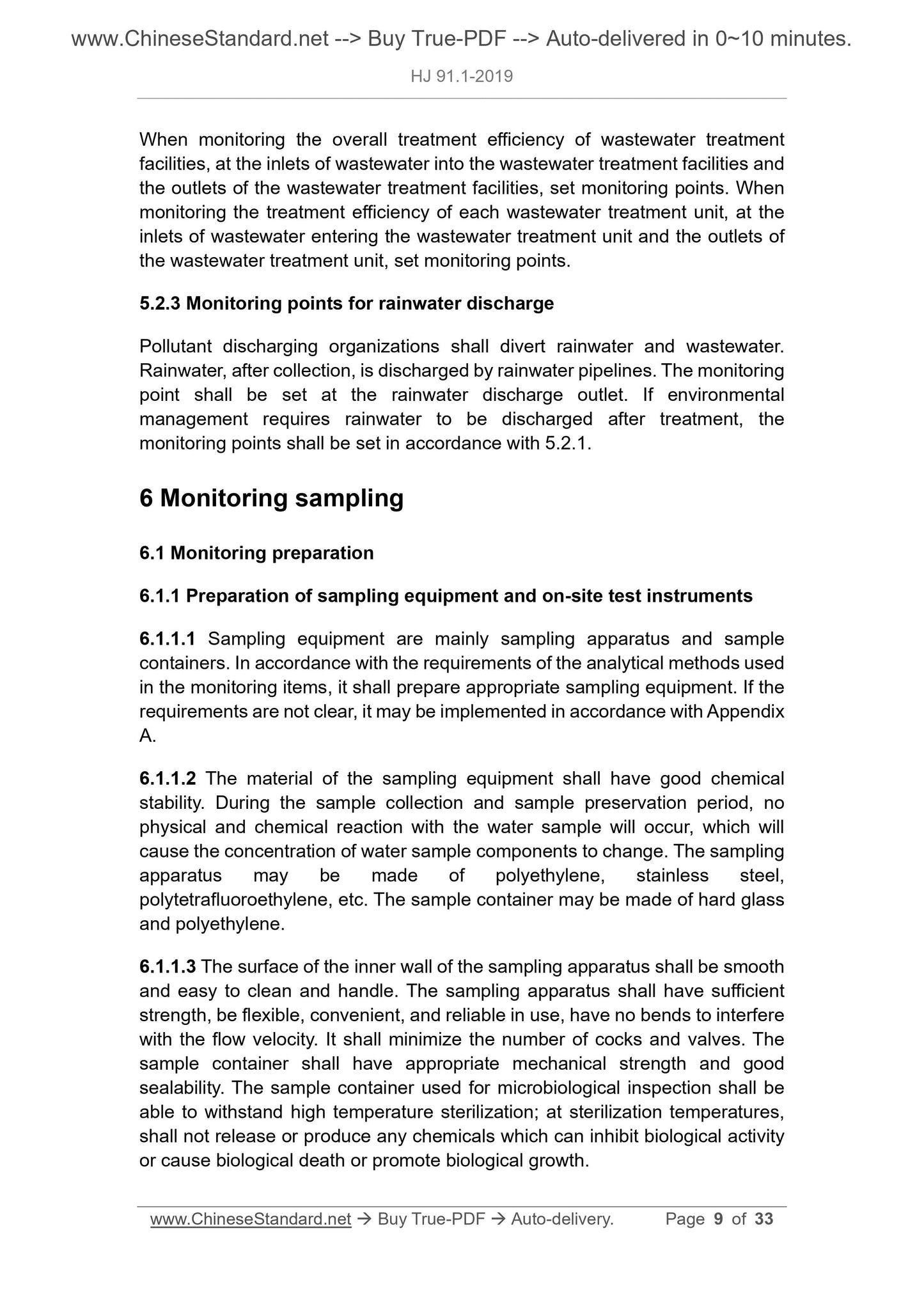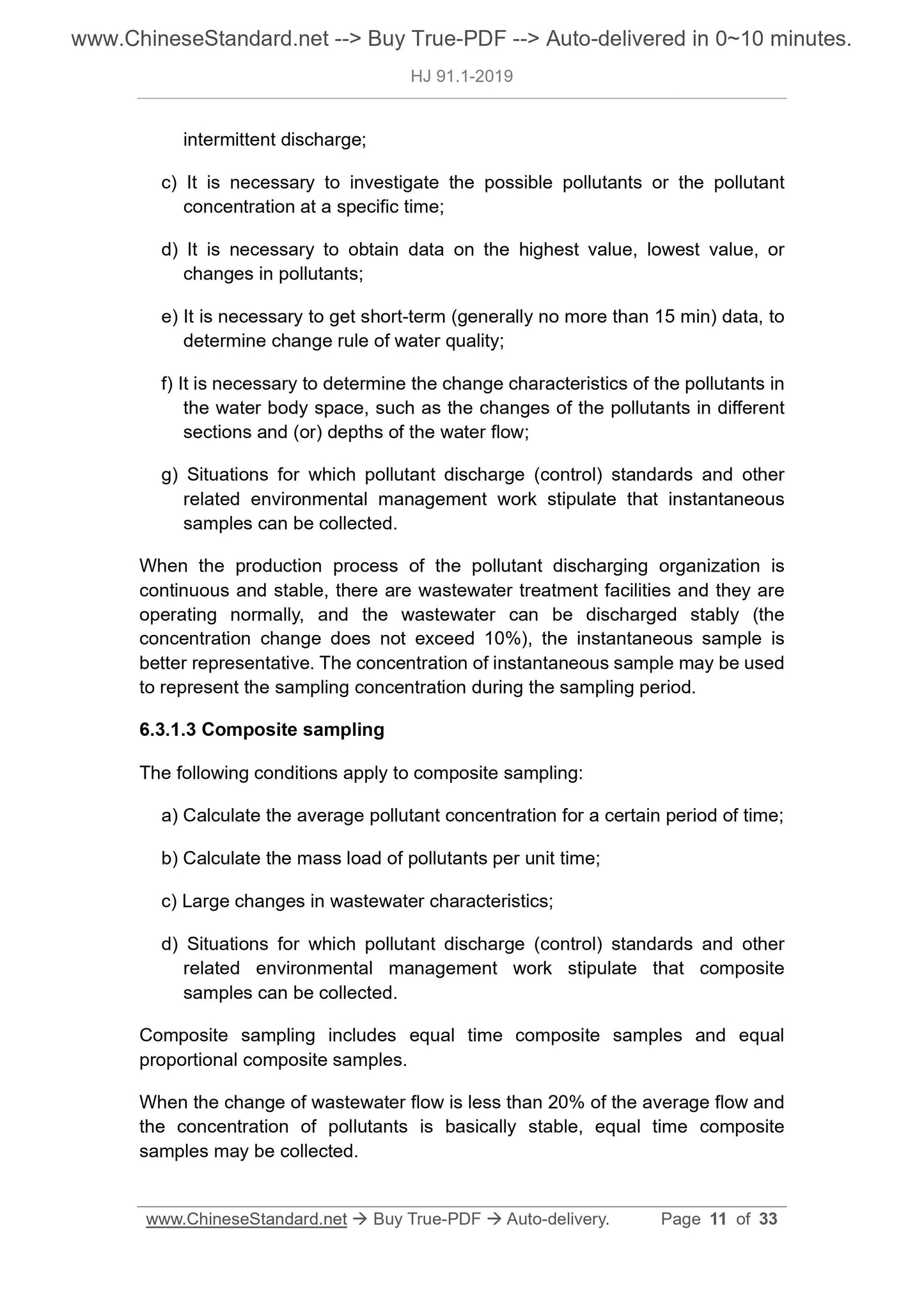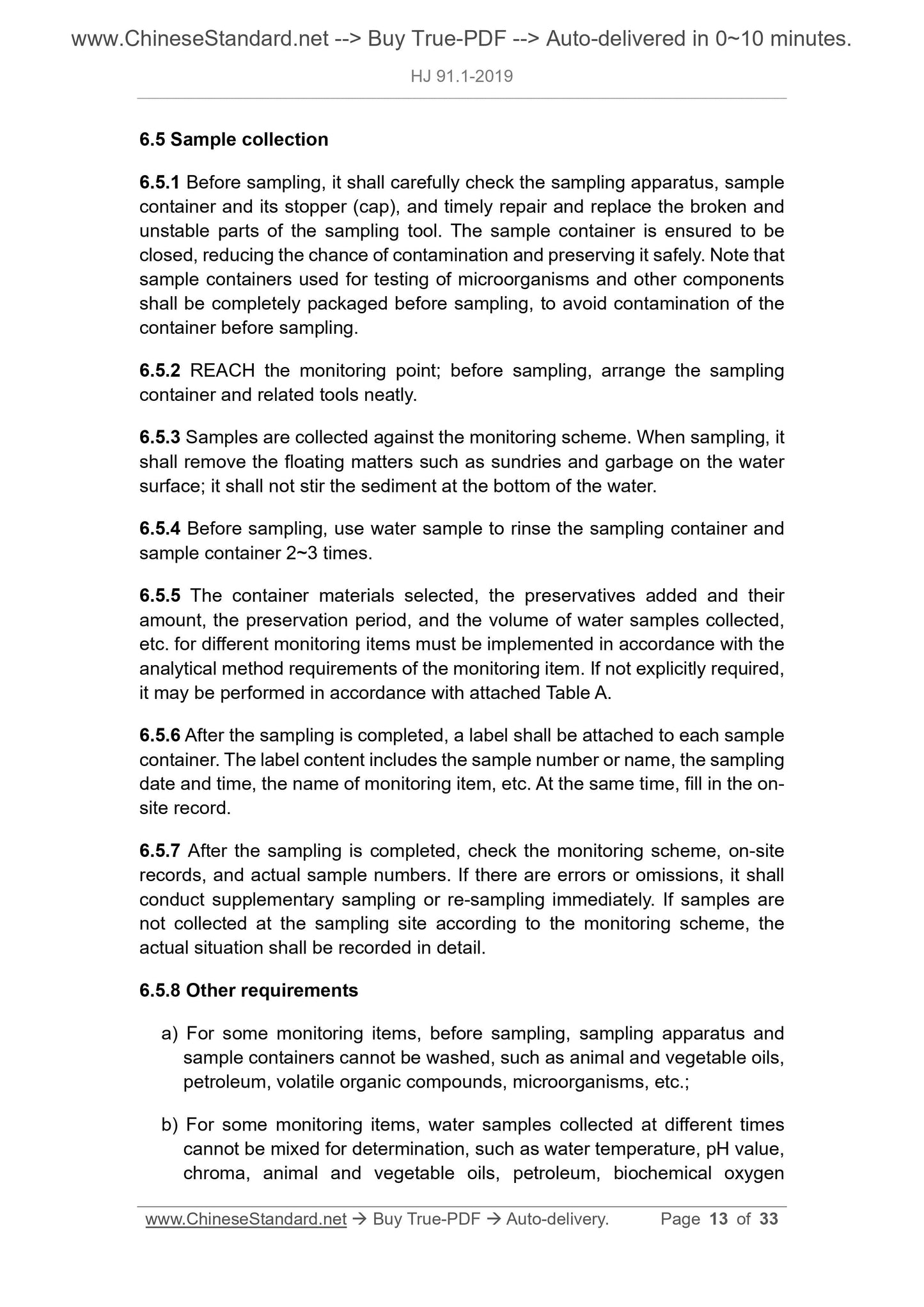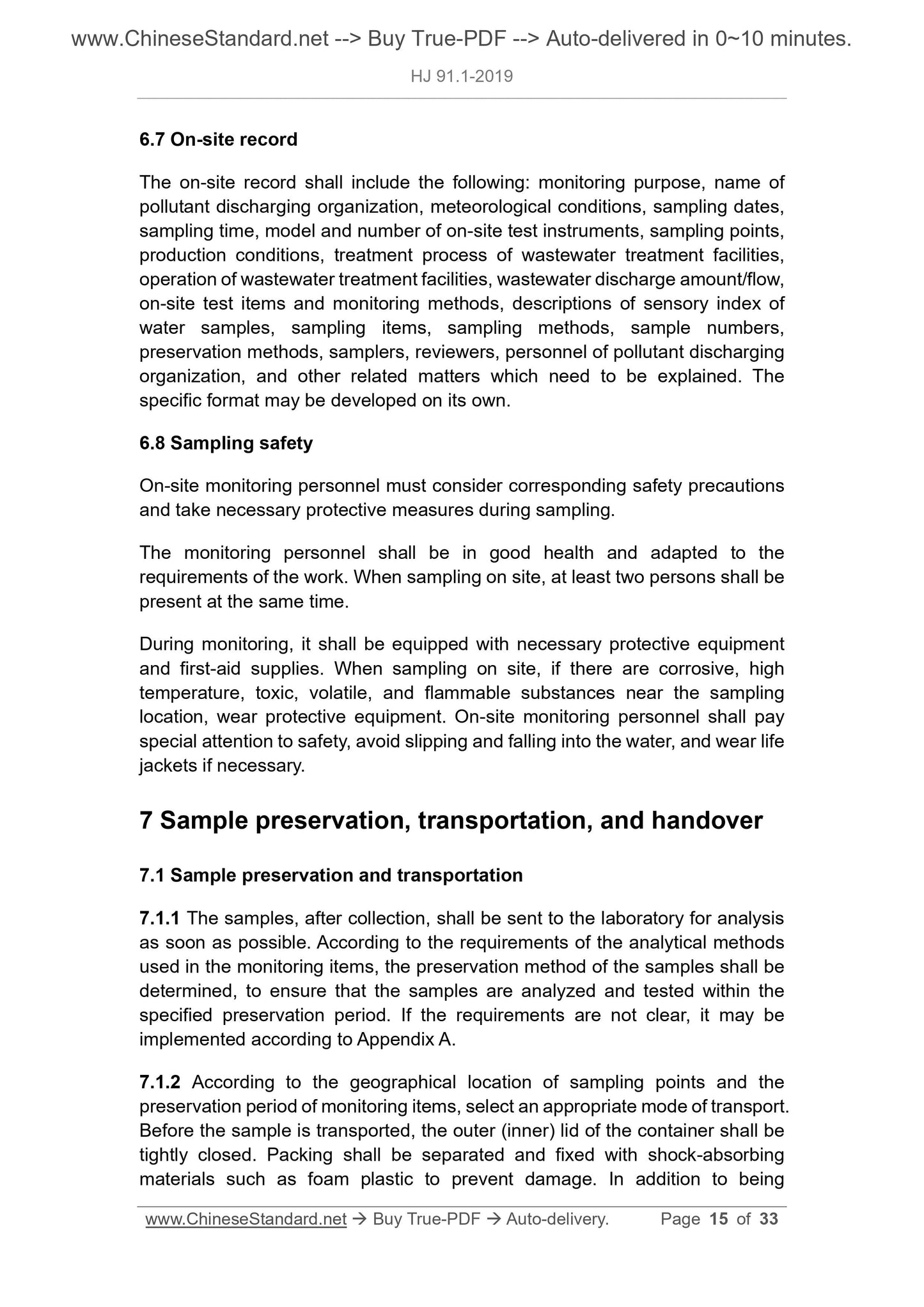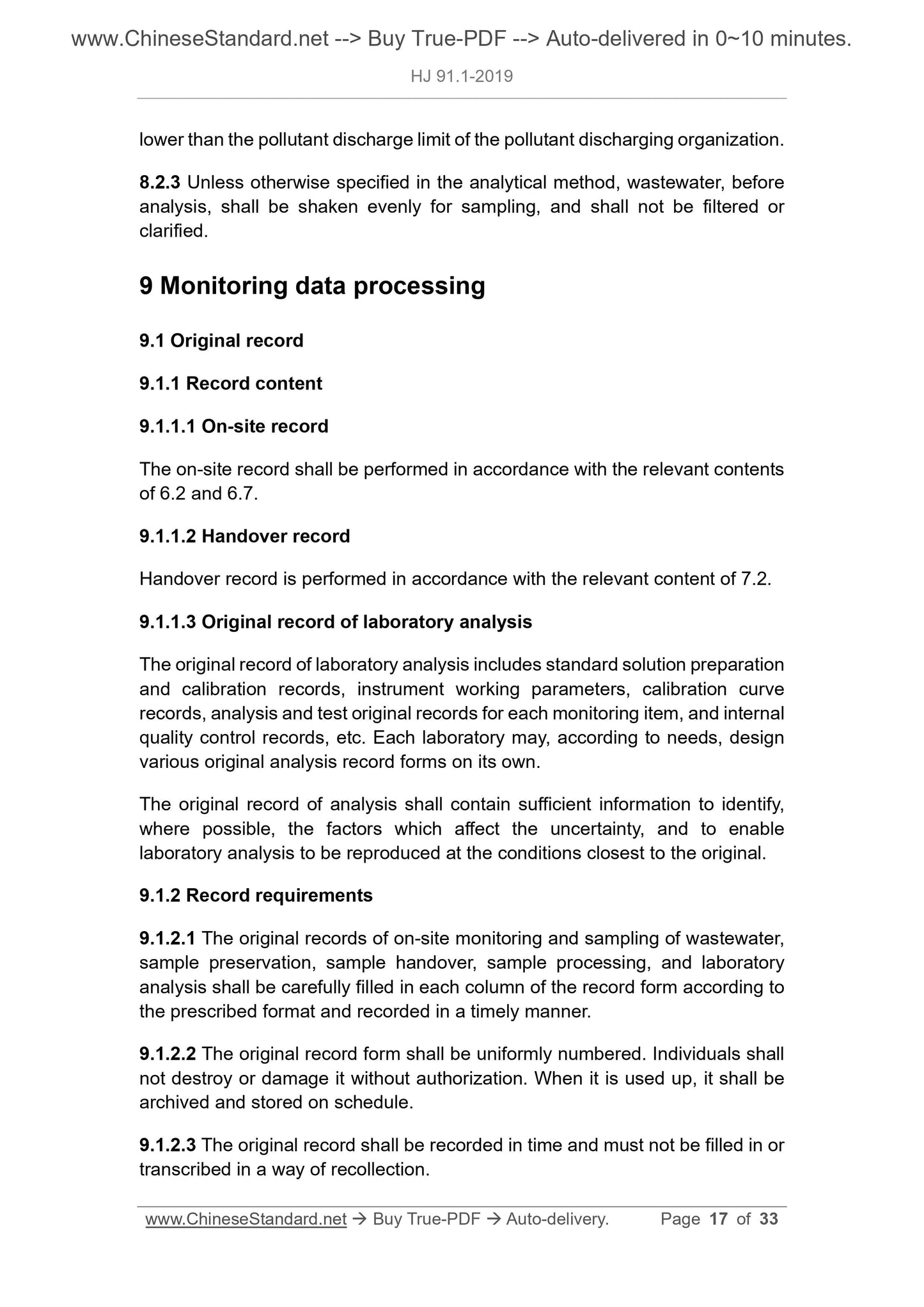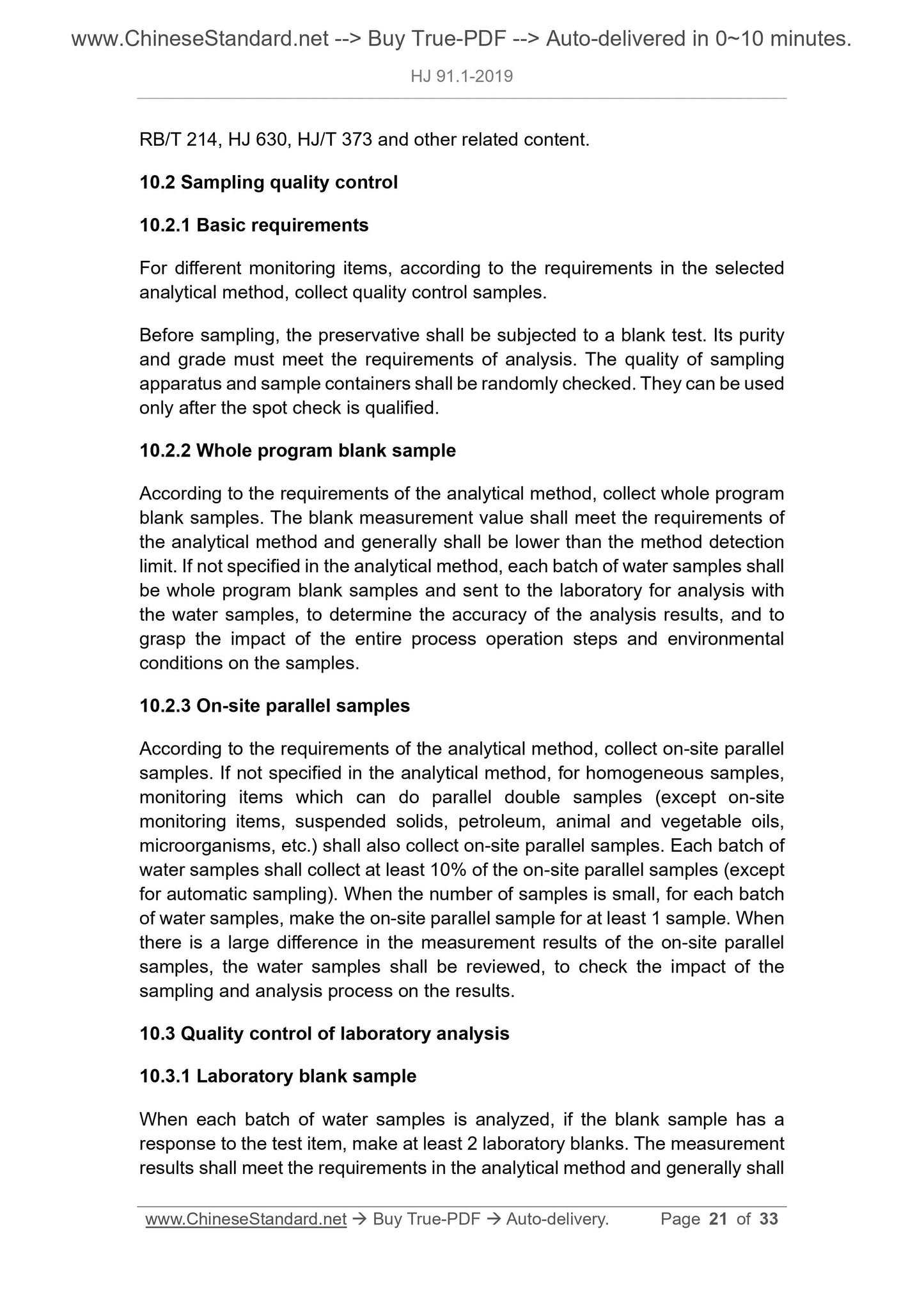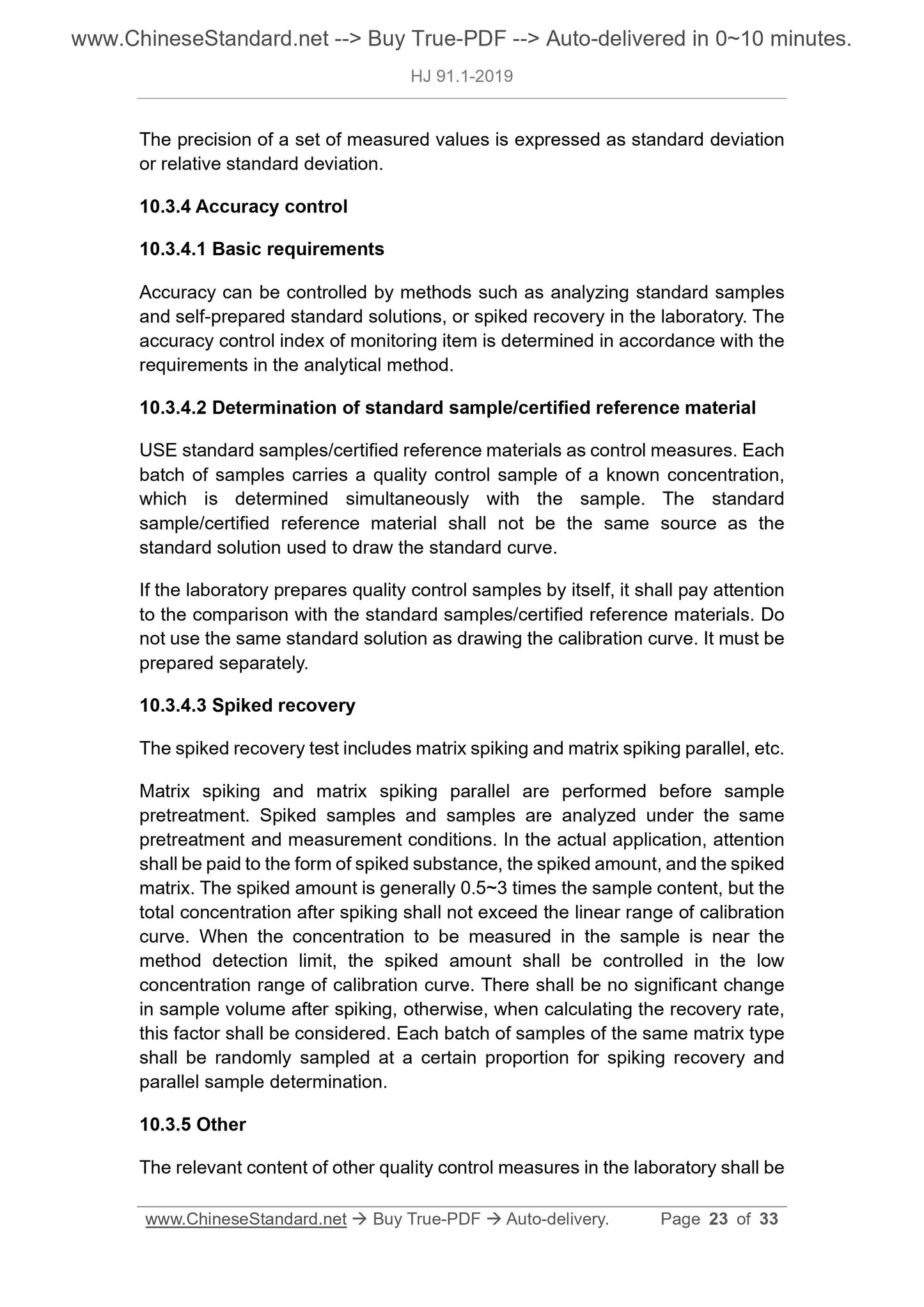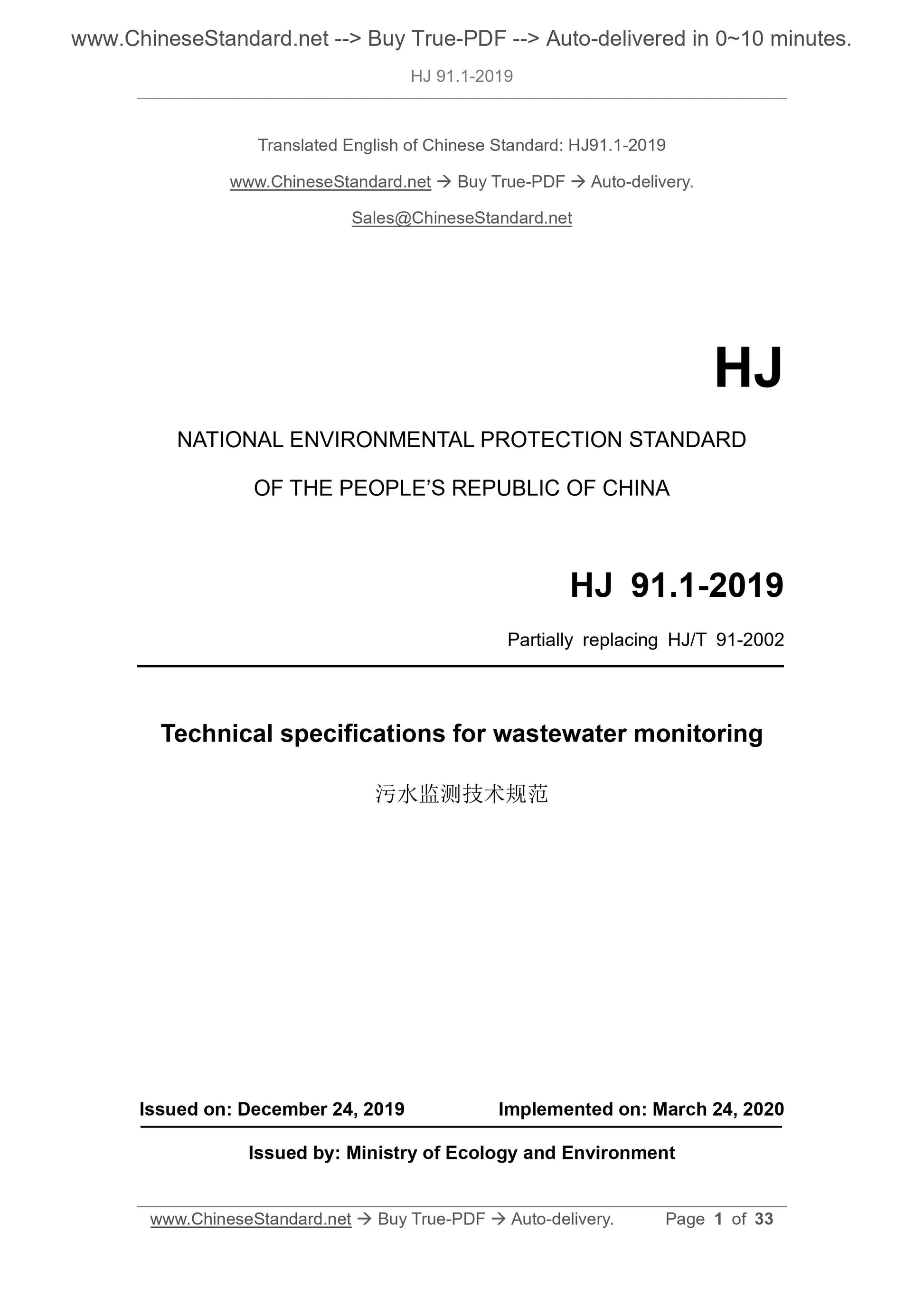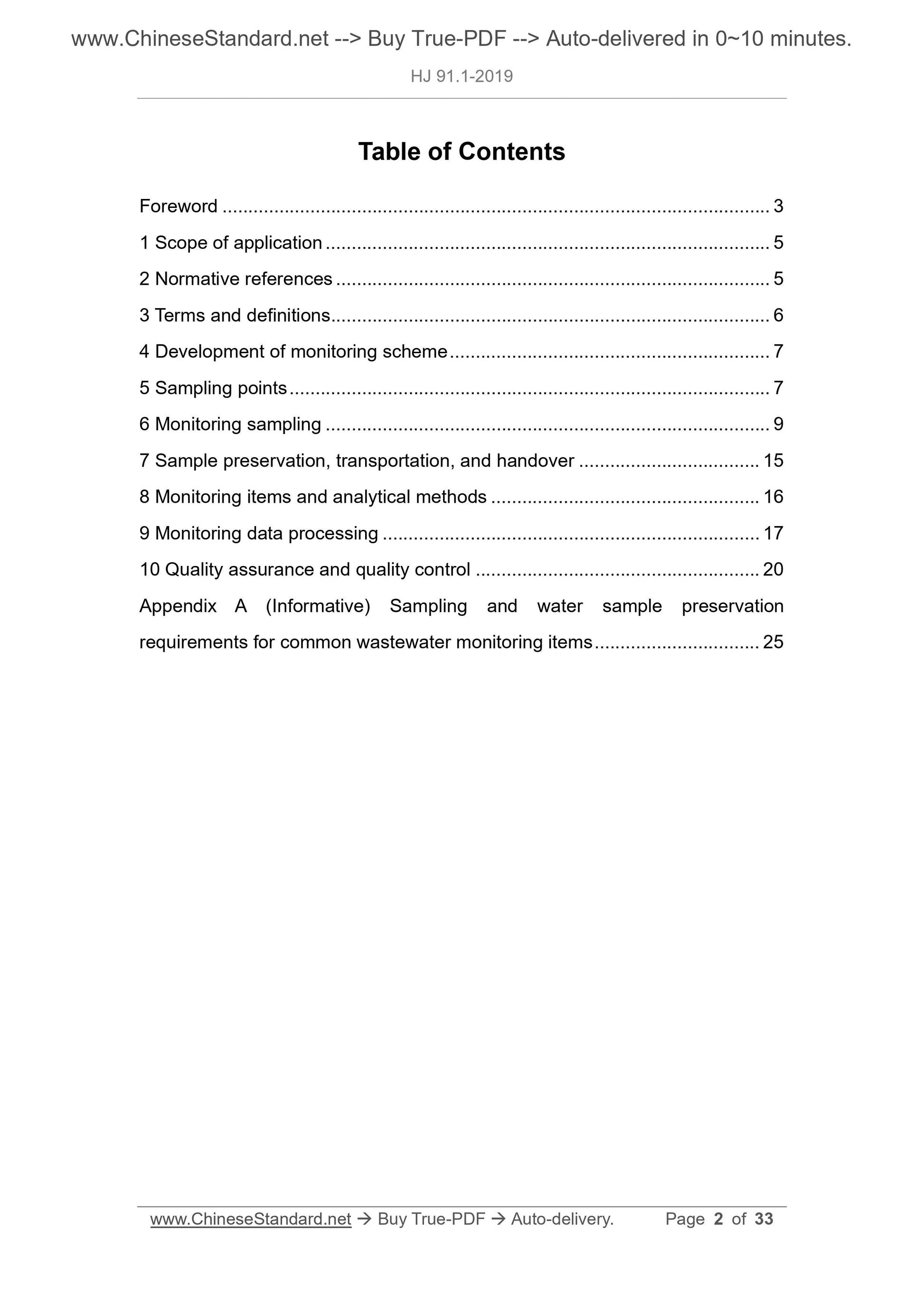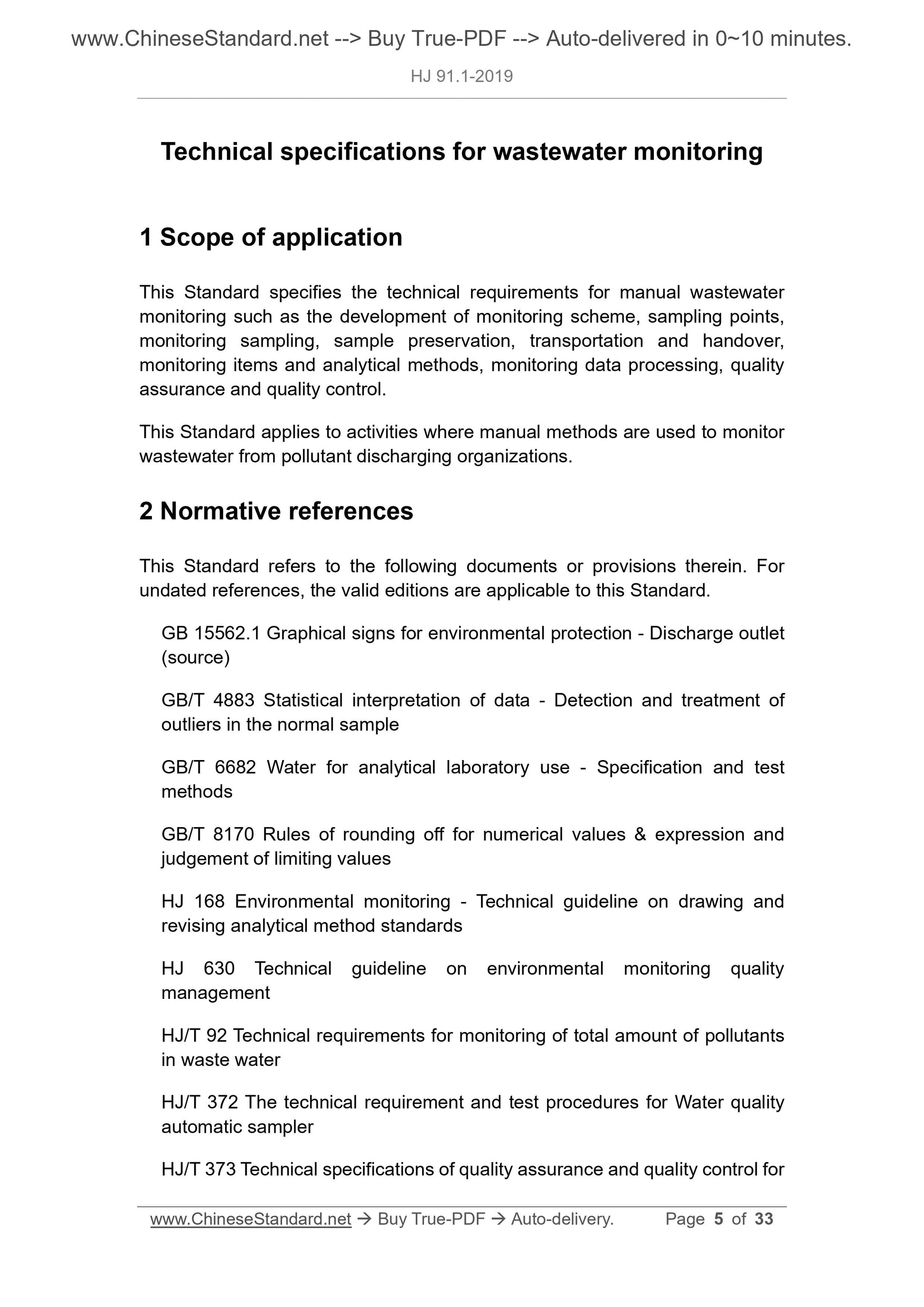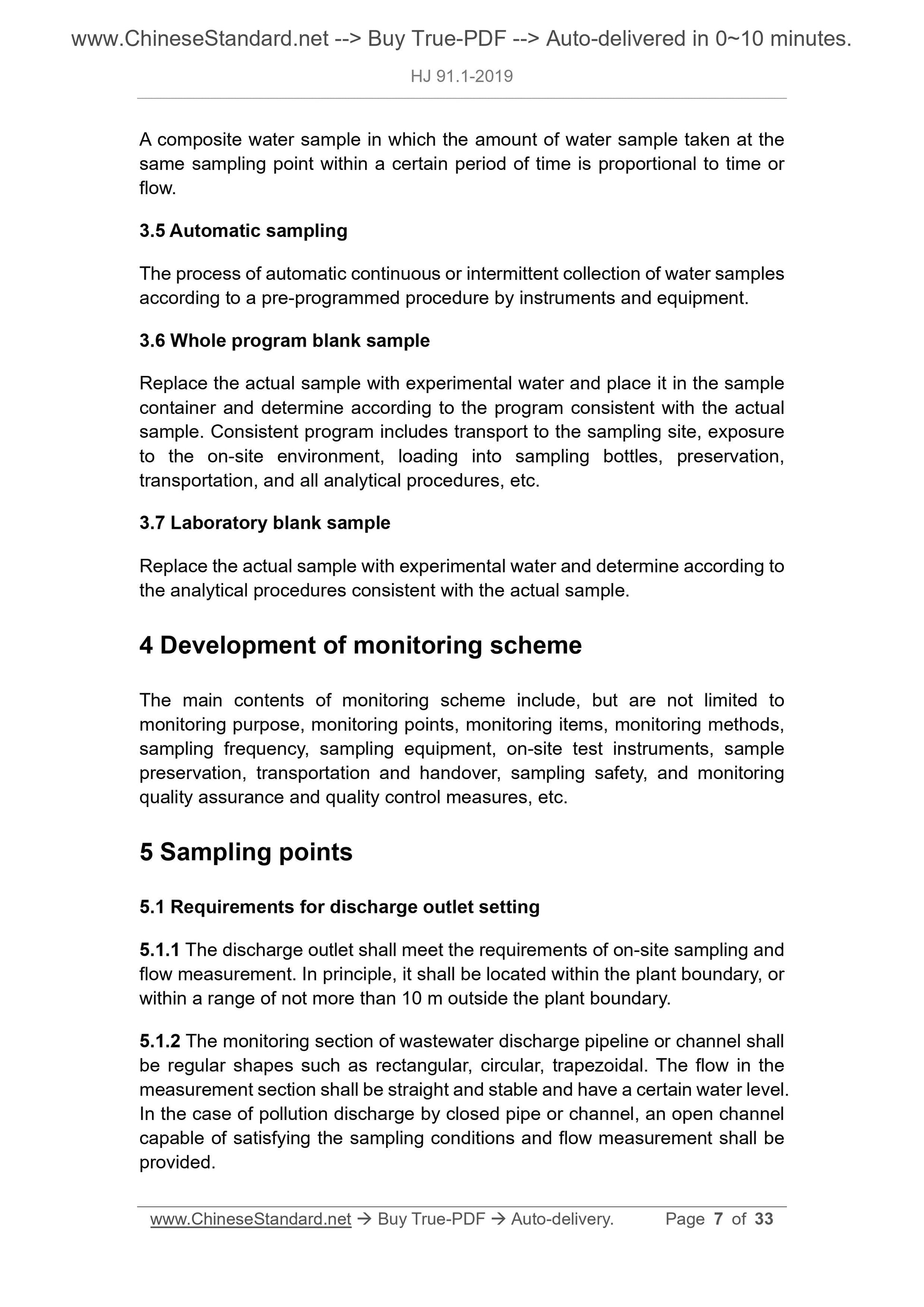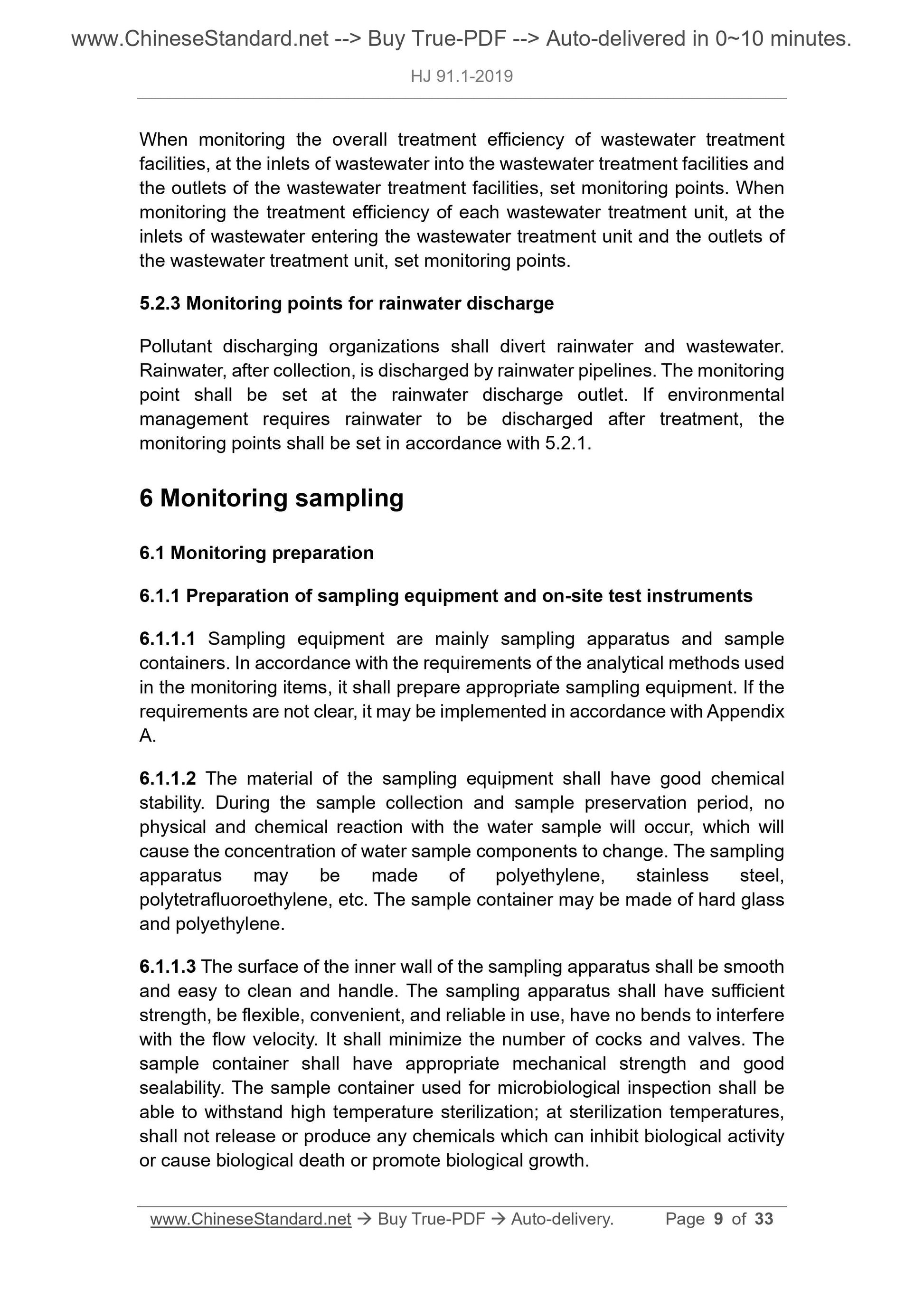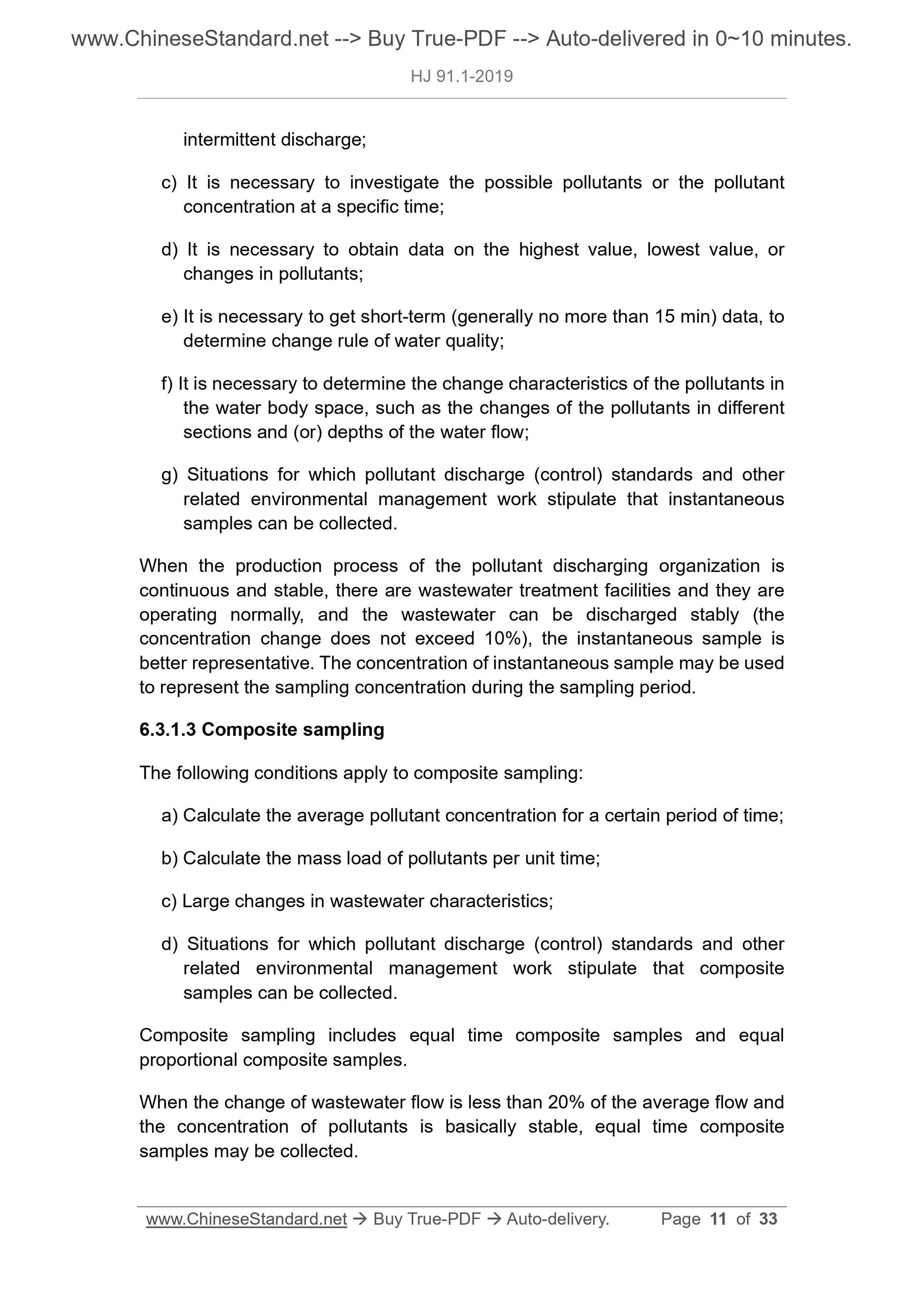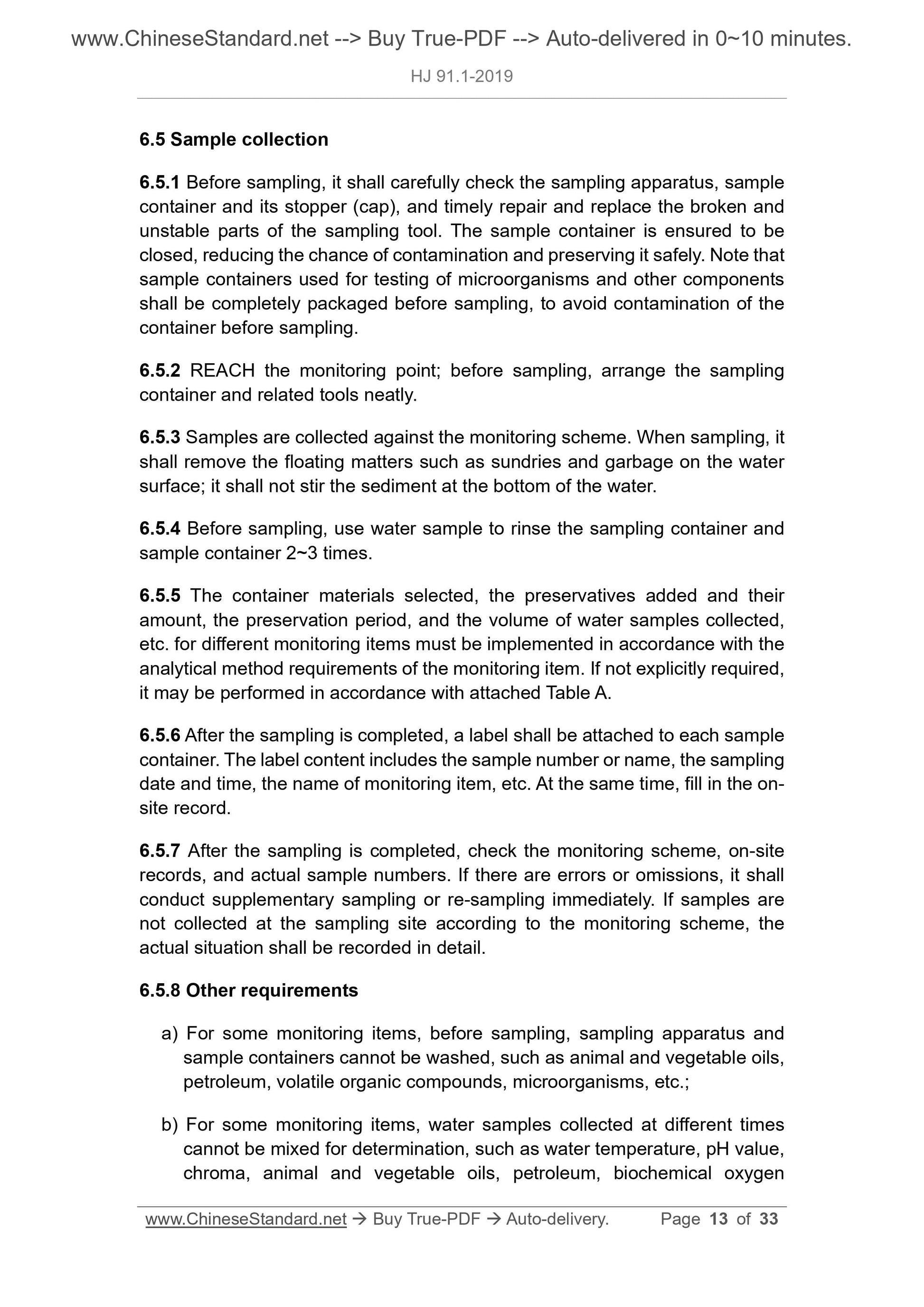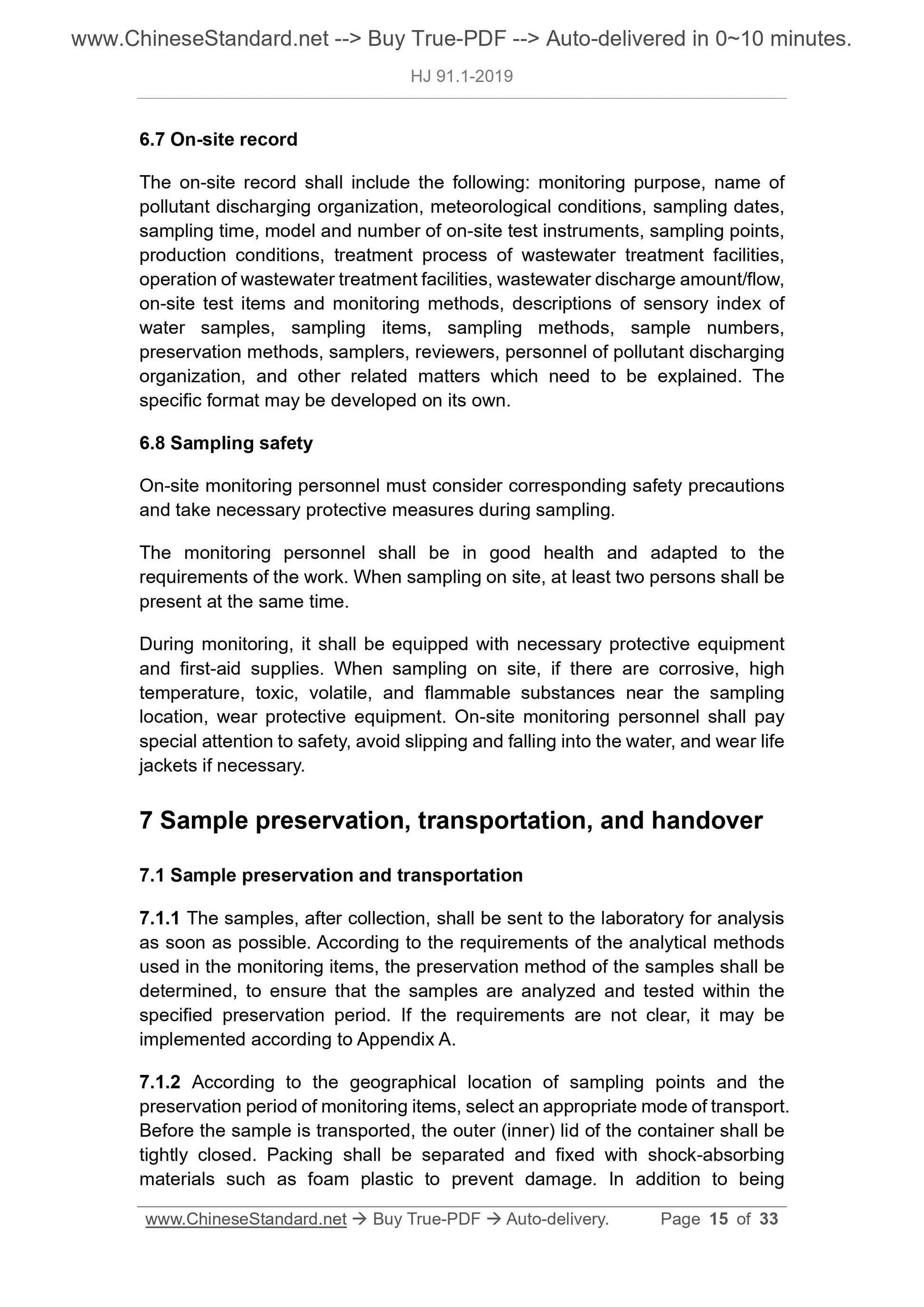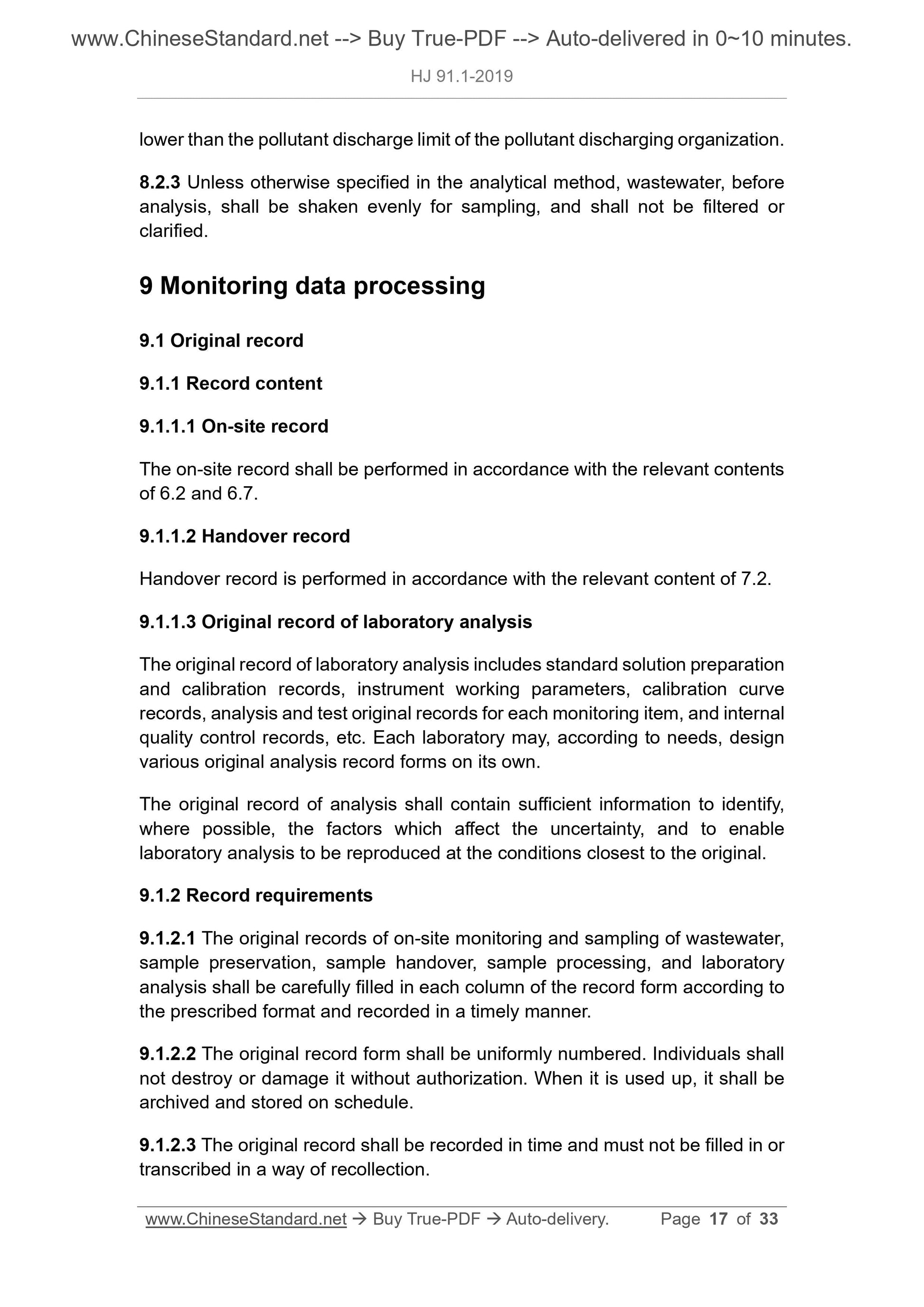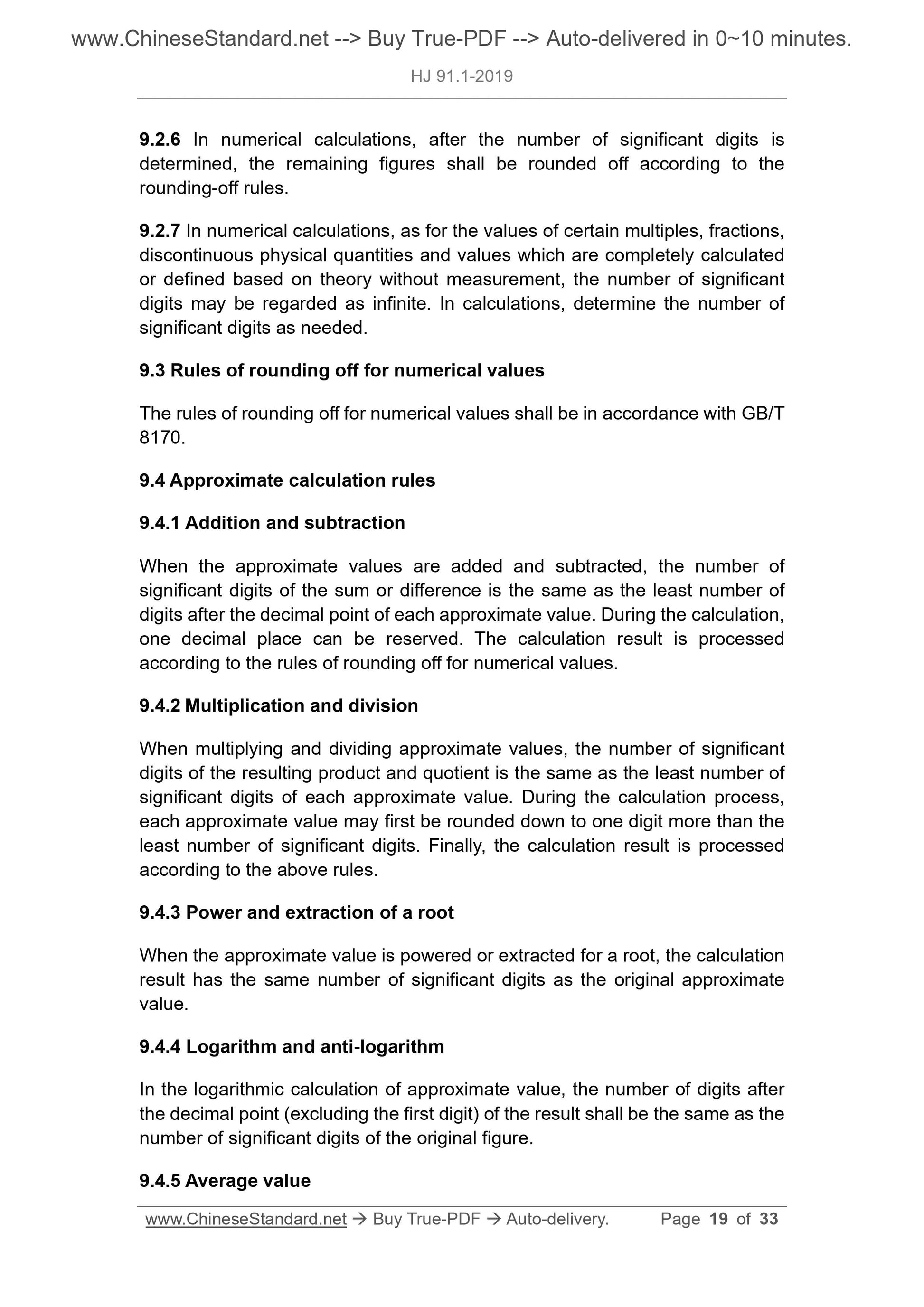1
/
of
12
www.ChineseStandard.us -- Field Test Asia Pte. Ltd.
HJ 91.1-2019 English PDF
HJ 91.1-2019 English PDF
Regular price
$370.00
Regular price
Sale price
$370.00
Unit price
/
per
Shipping calculated at checkout.
Couldn't load pickup availability
HJ 91.1-2019: Technical specifications for wastewater monitoring
Delivery: 9 seconds. Download (and Email) true-PDF + Invoice.Get Quotation: Click HJ 91.1-2019 (Self-service in 1-minute)
Newer / historical versions: HJ 91.1-2019
Preview True-PDF
Scope
This Standard specifies the technical requirements for manual wastewatermonitoring such as the development of monitoring scheme, sampling points,
monitoring sampling, sample preservation, transportation and handover,
monitoring items and analytical methods, monitoring data processing, quality
assurance and quality control.
This Standard applies to activities where manual methods are used to monitor
wastewater from pollutant discharging organizations.
Basic Data
| Standard ID | HJ 91.1-2019 (HJ91.1-2019) |
| Description (Translated English) | Technical specifications for wastewater monitoring |
| Sector / Industry | Environmental Protection Industry Standard |
| Classification of Chinese Standard | Z10 |
| Classification of International Standard | 13.060.30 |
| Word Count Estimation | 23,239 |
| Date of Issue | 2019 |
| Date of Implementation | 2020-03-24 |
| Issuing agency(ies) | Ministry of Ecology and Environment |
Share
